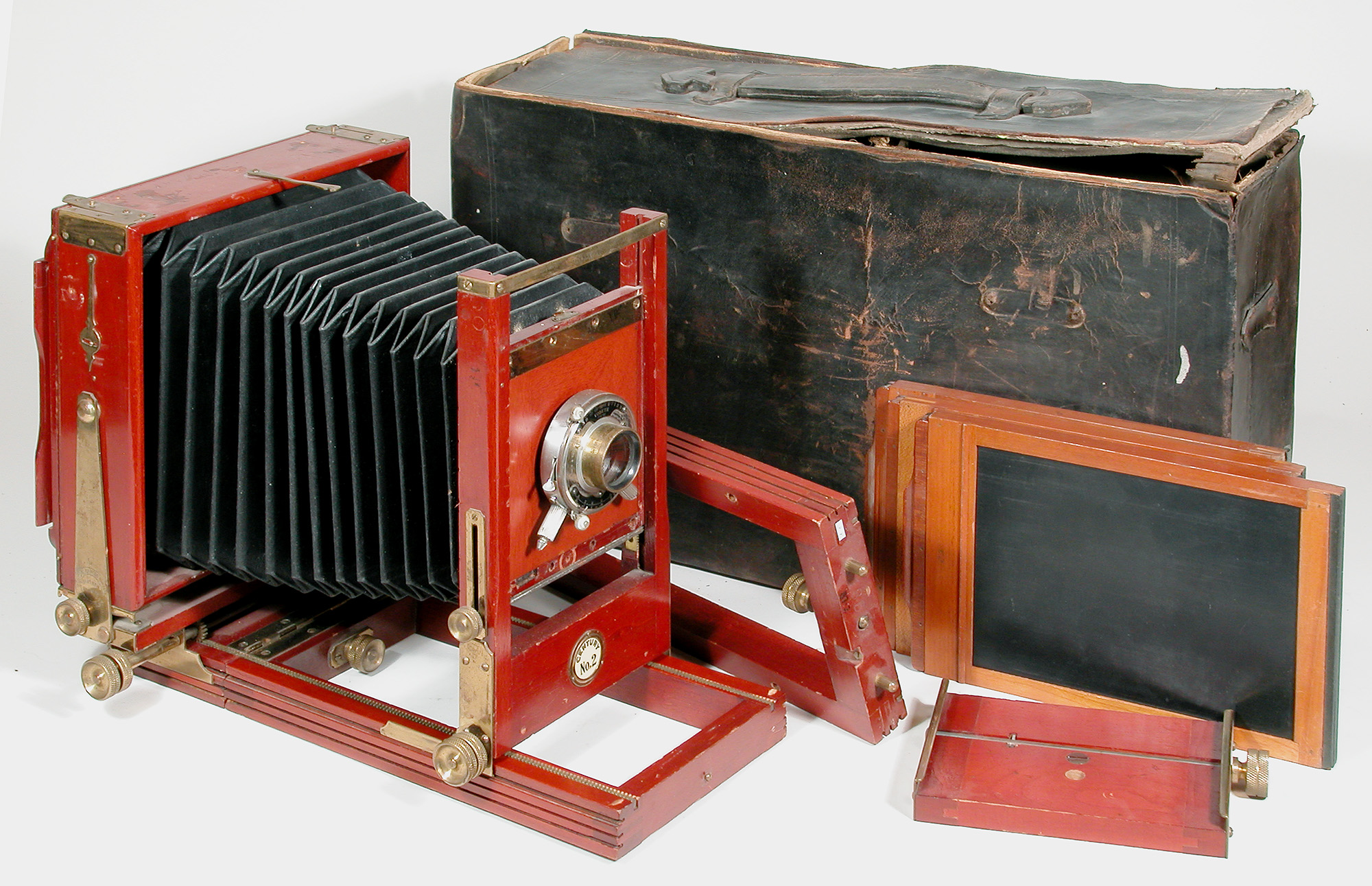Today’s blog post is going to start with a short story.
Over a century ago, in a world far less digital than our own, this new documentary phenomenon known as photography was moving at an uncontrollable pace. Art critics were calling for all artists to drop their brushes and pencils, for what they could conjure up in hours/days/weeks/years could be reproduced in a fraction of the time. In another part of the country, middle class and lower income families were taking advantage of the convenience of photography to create a relatively inexpensive family portrait. Heck, people were even taking photos of non-studio subjects just for their aesthetic appeal. Madness, I know.
Now that you can visualize such an exciting time, take a look at the image below. This 1905 Century No.2 view camera embodies the industrious spirit of its era. That’s right, I said view camera. This thing is nothing more than wood/metal, glass, leather, and ingenuity!
 Kodak Century No. 2, courtesy of Pierce Vaubel.
Kodak Century No. 2, courtesy of Pierce Vaubel.
If you’d like to learn more about view cameras, here are some great sites to check out:
LargeFormatPhotography.info - if they don't have it, nobody else does either.
ViewCamera.com - the Journal of Large Format Photography
KenRockwell.com - great place to see 4x5 and large format landscapes
Photo.net - choosing a large format camera
Still scratching your head on how this thing works? Here's an entertaining look at the whole process:
Reasons that I’m using a view camera:
1. Resolution - at bare bones scanning levels, I’m getting 80Mp files. Cranking up the DPI can yield upwards of 3 Gigapixels!
2. Dynamic Range - ever wonder how images managed to look stunning prior to the Photoshop CS line? Look no further than sheet film.
3. Speed - or lack there-of. This beast with tripod and film holders clocks in just above 50lbs. Setting up and focusing at my fastest is somewhere around 10 minutes. And at about $5/sheet of film, I’m not going to be shooting more than a handful in a given day/week.
4. Complete Control - Perfect control of perspective, Zone System metering, custom image processing, and of course with said control, several hundred ways to equally screw up an image. x__x
5. Young Chicks Dig Retro - If by young and chicks you mean old and balding men, of course. Either way, it’s fun to have a small crowd gather round every now and then.
Now for the anti-climactic finish to all this awesome 8x10 buildup.
 The sharpness Duke, the sharpness!Scan 1: Out on the reservoir
The sharpness Duke, the sharpness!Scan 1: Out on the reservoir
Perspective? Check. Sharpness? Check. Handful of mistakes? Double check. By no means is this a good or usable shot. This is, however, an exercise in the power, depth, and range of the 8x10 format. And as I’d later find out, part of a continuing series of photos teaching me how to properly load a film holder and tray agitate my negatives. >__<
Something Good: Light actually managed to hit the film in a manner that produced something resembling an image. This means I haven’t wasted $5.
Something Bad: Knowing from this image that there’s little turning back to traditional photographic formats.
Something Learned: I’ve just started a greater learning process that I might not complete in a satisfactory manner in my lifetime. 0_____0
Next Week: A more detailed explanation of how things are going to be run around here, in lieu of this new piece of photographic equipment.